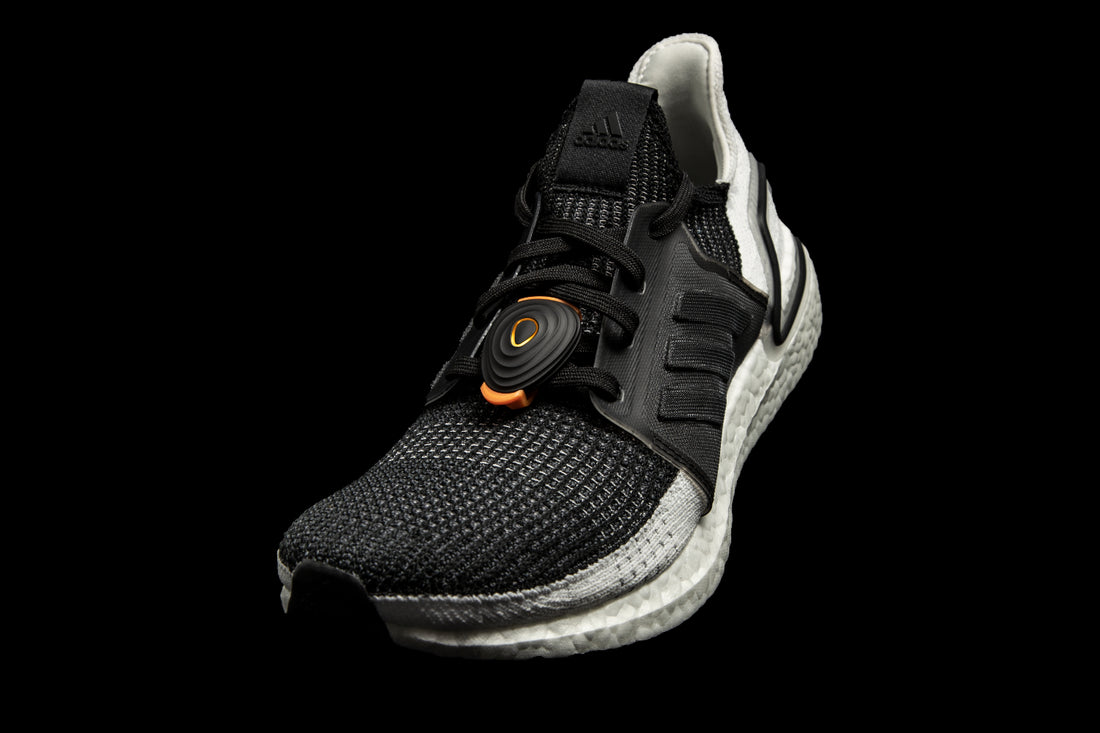
Stryd - impressions of use through the eyes of elite athletes
authors: Peťo Fraňo, Matúš Hujsa, Jakub Šiarnik
March 22, 2024
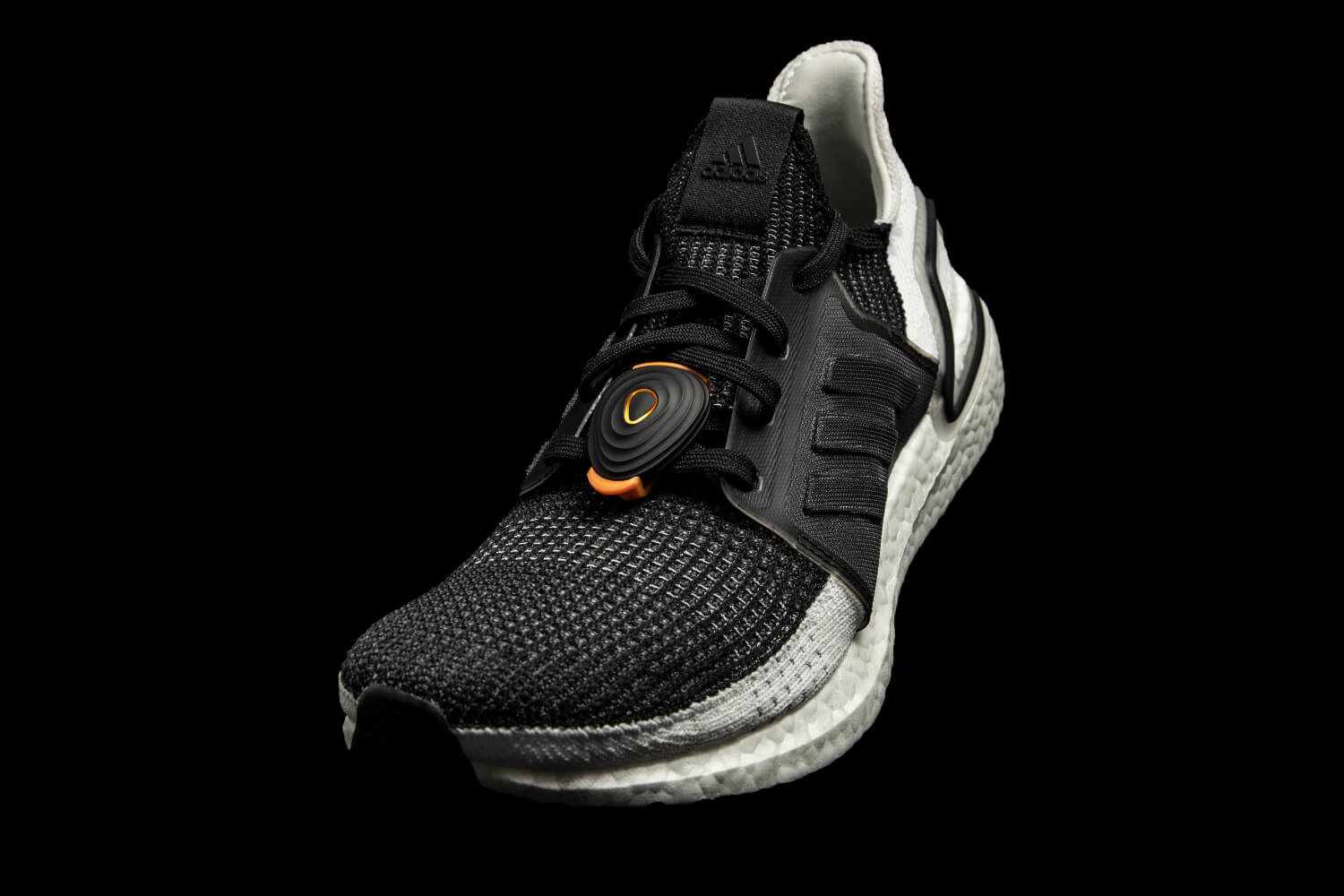
Introduction
Measuring performance during sports activity is nothing new. This precise and objective metric has been used in cycling for years and provides immediate feedback on the power expended at a given moment. This metric is gradually finding its way into running sports. Small "pods" attached to running shoes measure a lot of data and then interpret them through complex algorithms in the form of a resulting value given in Watts. In the segment of running power meters, the American brand Stryd is the clear leader and pioneer. E-shop ralpu is a partner and authorized dealer of the Stryd brand in Slovakia.
Friends of the ralp e-shop have been familiarizing themselves with this advanced gadget for several weeks, testing it during training and racing. Peťo Fraňo - our best trail runner - shed light on the accuracy and benefits of using Stryd during cross-country training. Matúš Hujsa - coach of the water slalom of the Police Sports Center with a passenger car on the 10 km track 31m:28m:58s - evaluated the use of Stryd during training on a running oval, treadmill and also at road running races in Vienna. Jakub Šiarnik - representative of the Slovak Republic in ski mountaineering, member of Dukla Banská Bystrica - also tried out Stryd (although only in a limited way, since his main sport in winter is ski mountaineering). Each of these athletes brings a different perspective. Let's dive into the details and impressions of using Stryd.
Pete Frano
impressions from using Stryd
Peťo Fraňo - our best trail runner. Multiple TOP 10 placement at CCC-UTMB, third place at the World Trail Running Championships, Innsbruck 2023. Multiple representative of the Slovak Republic in trail running and ski mountaineering. Here is his summary of two months of using Stryd.
Peťo Franňo: Instagram Website
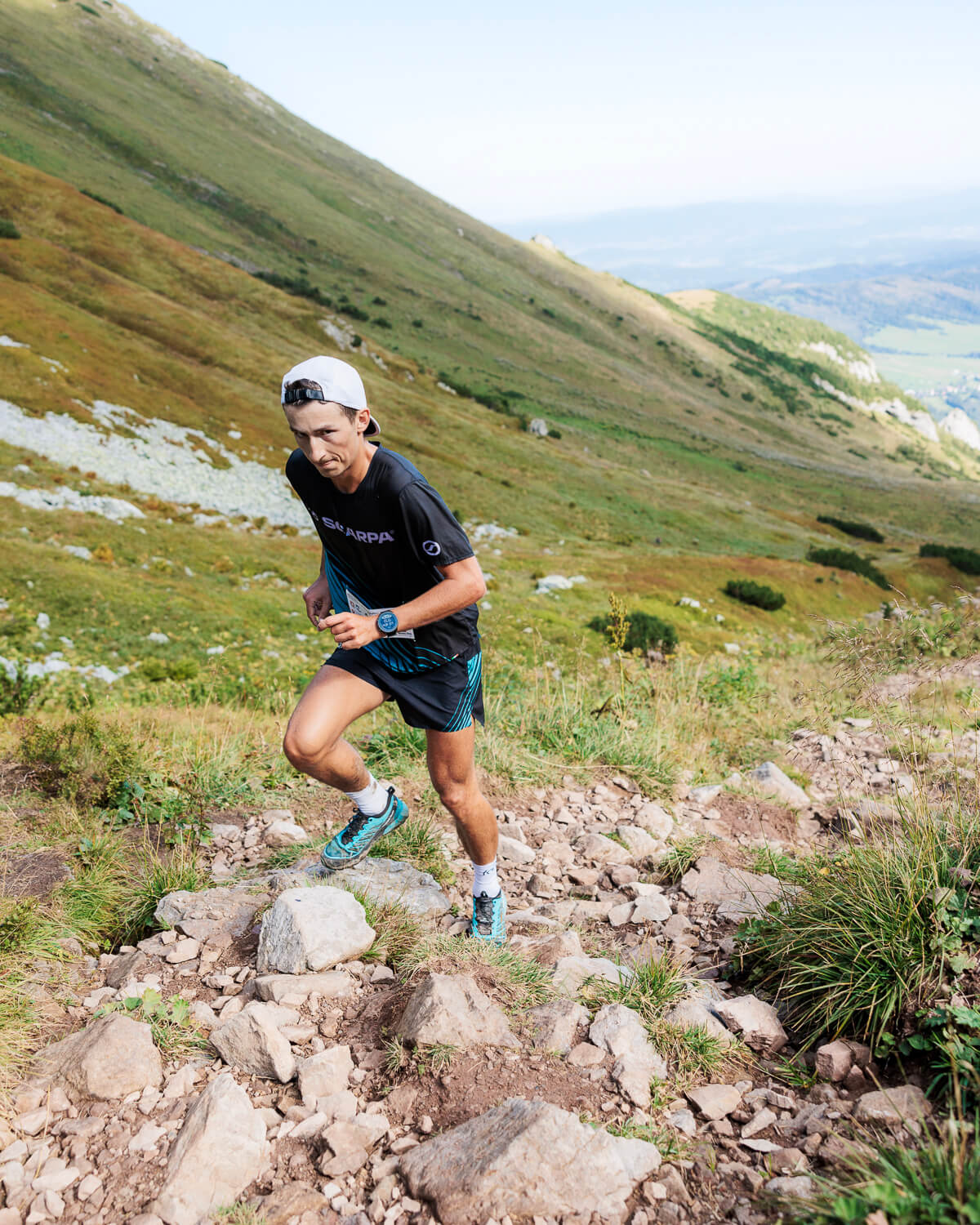
Introduction
There are many reviews of Stryd on the web, so I won't repeat myself. I've been using Stryd for two months now, so I'm sure I haven't yet discovered its full potential - both in training and especially in running races (because I haven't completed any during this period). At first, I was quite skeptical about the Stryd device. I considered it just another sports device that would provide me with additional data and overwhelm me with unnecessary information, understanding which would unnecessarily take up time that I could have invested in training. However, after the first few workouts, Stryd quickly convinced me and became my most watched screen on the watch. Below I write about the three biggest benefits from my point of view.
Peťo has been developing running talents for several years. If you feel that your training is stagnant or you want to prepare well for the main races of the season, Peťo can help you. You can find more details on his website.
Really very accurate and fast capture of even a small elevation gain or change in pace
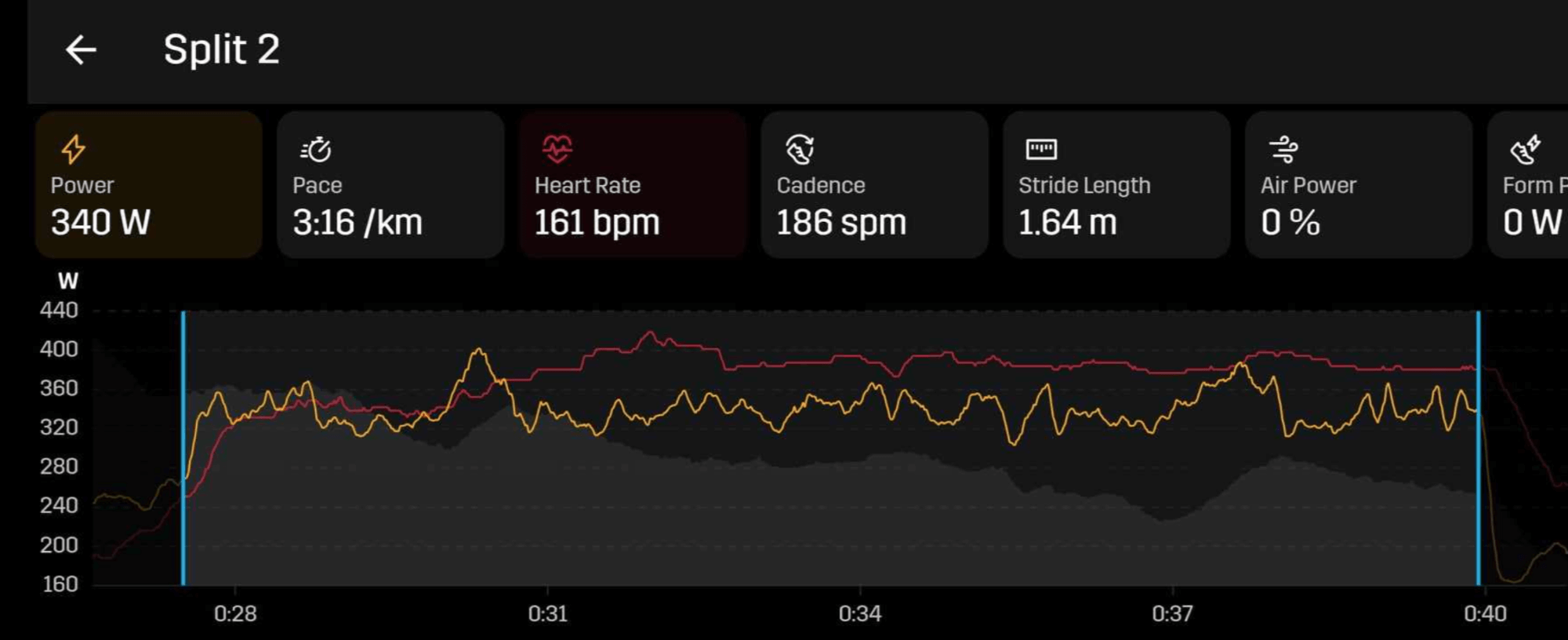
Above is a training session where I ran at a pace of about 4 min/km on asphalt, while in less than 4 km I climbed 12 m and descended 24 m. The picture shows the curve of watts (yellow) and heart rate (red). As you can see, at a minimum climb, Stryd immediately recorded an increase in power, while the heart rate monitor recorded this change significantly later. For this reason, I perceive Stryd as a much better indicator during training compared to the heart rate monitor (typically a chest strap), which took almost 2 minutes to evaluate the increased effort on a slight climb, while in those two minutes I was already running flat again.
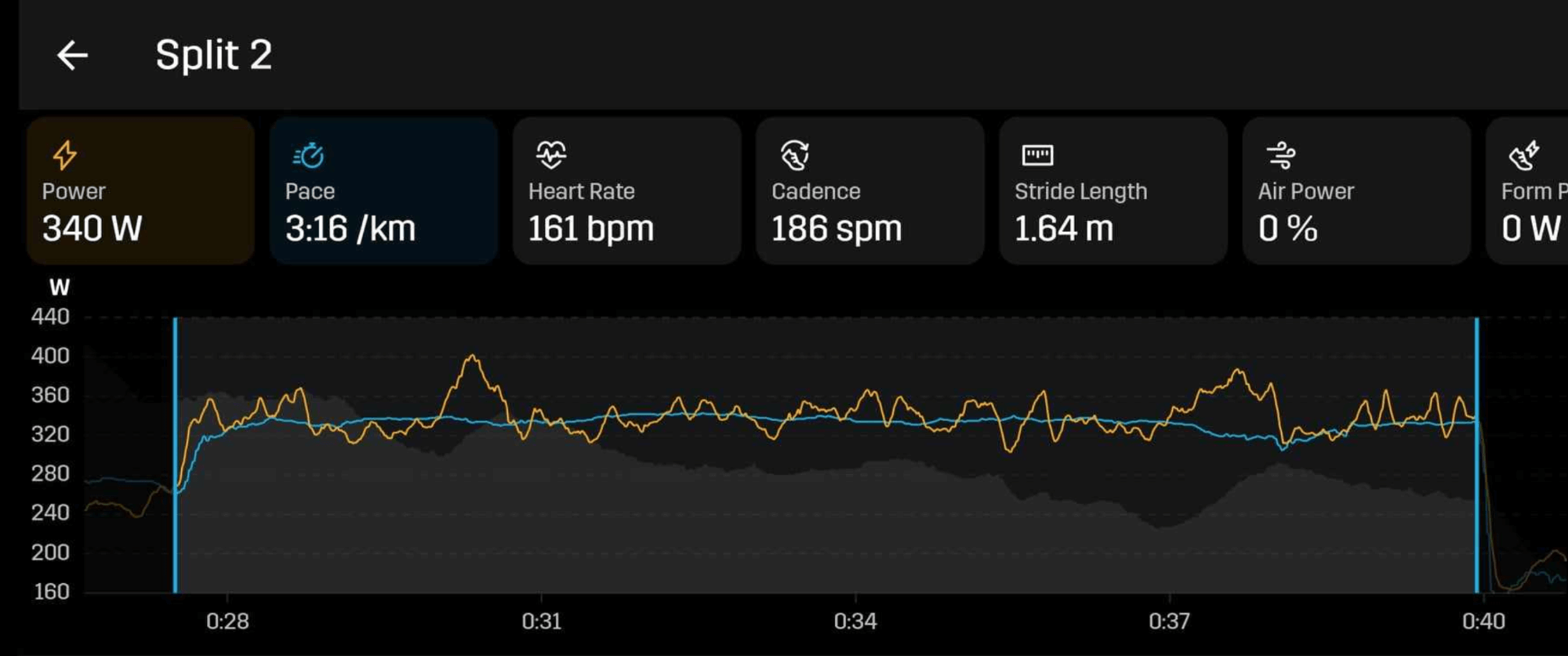
The image above shows the pace curve (blue) and again the watts curve (yellow). The pace was almost constant, but it is possible to see quite significant variations in power, which can be one of the key factors in races where we try to go at a constant effort.
Finally, a device that can objectively evaluate field effort
For me, as a mountain runner, it is crucial to be able to control the effort in the terrain, which is much more challenging than running on the flat. On the flat there are a number of metrics that are constant and can fairly accurately determine the zone (intensity) in which we are in a given training session. These can be heart rate (pulse), pace, cadence, etc.
In the field, all these indicators are very variable and it is almost impossible to orientate yourself throughout the training (heart rate when running uphill will always be higher than when running downhill; pace when running downhill will always be faster than uphill...). This was also one of the reasons why I never used a heart rate monitor (typically a chest strap) or anything similar for a long time. I simply did not consider it accurate and reliable when running in the field and I always relied more on my feelings. Stryd is so far the only device that shows me relevant data that is applicable throughout the entire training, not just in a certain part of the training. Thanks to Stryd, I can be around 265 W throughout the training (everyone has these values differently, so this figure is not significant), whether running uphill or running downhill. I find it incredibly helpful, especially for inexperienced runners who don't know themselves well enough yet and tend to run unnecessarily fast and don't know how to estimate their strength.
Below is a workout where I ran at a 5 min/km pace uphill and a 3 min/km pace downhill. It felt like the same effort (also in watts) but all the other data is different. This confirms to me that it is possible to train sections while running (of course you need to have a sufficiently trained musculoskeletal system for this). In the past, downhill running was pretty damned and considered too risky for injury, but the current trend is that if you can't run downhill, you have no chance of succeeding.
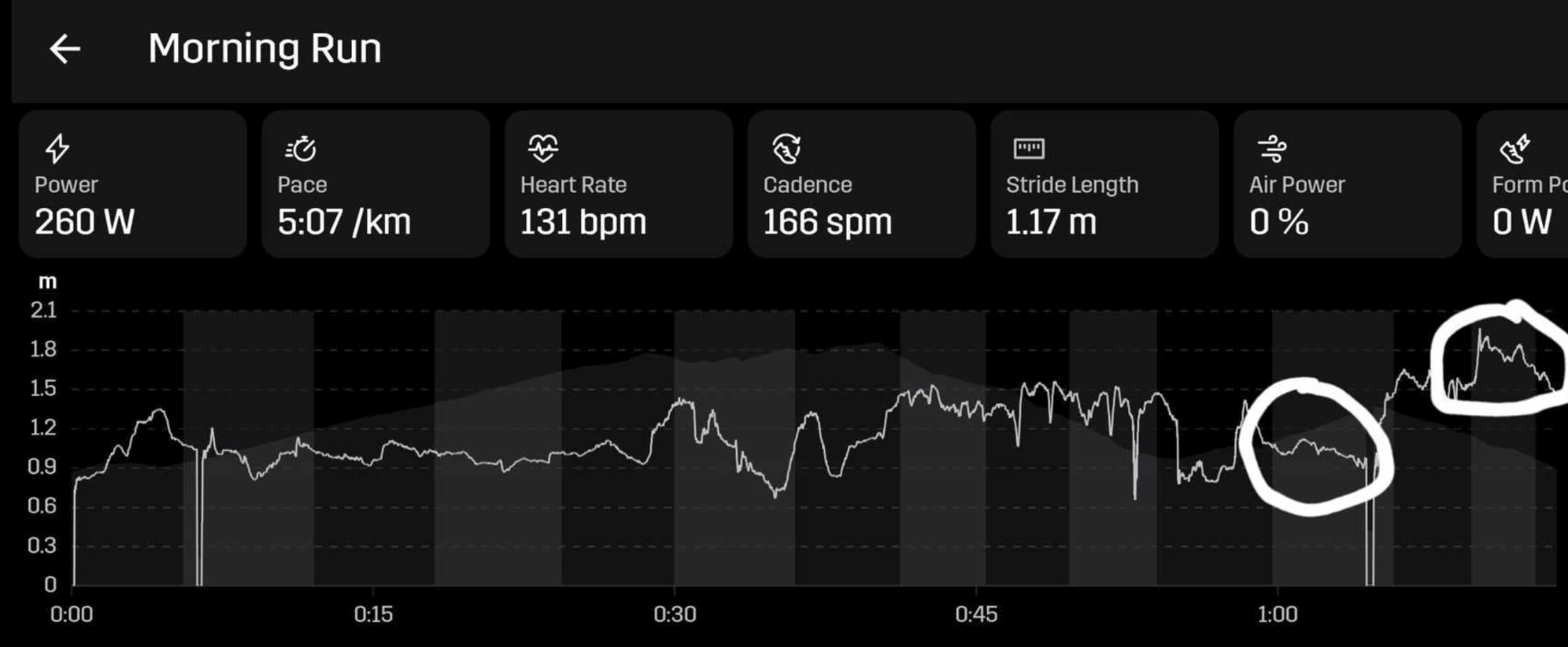
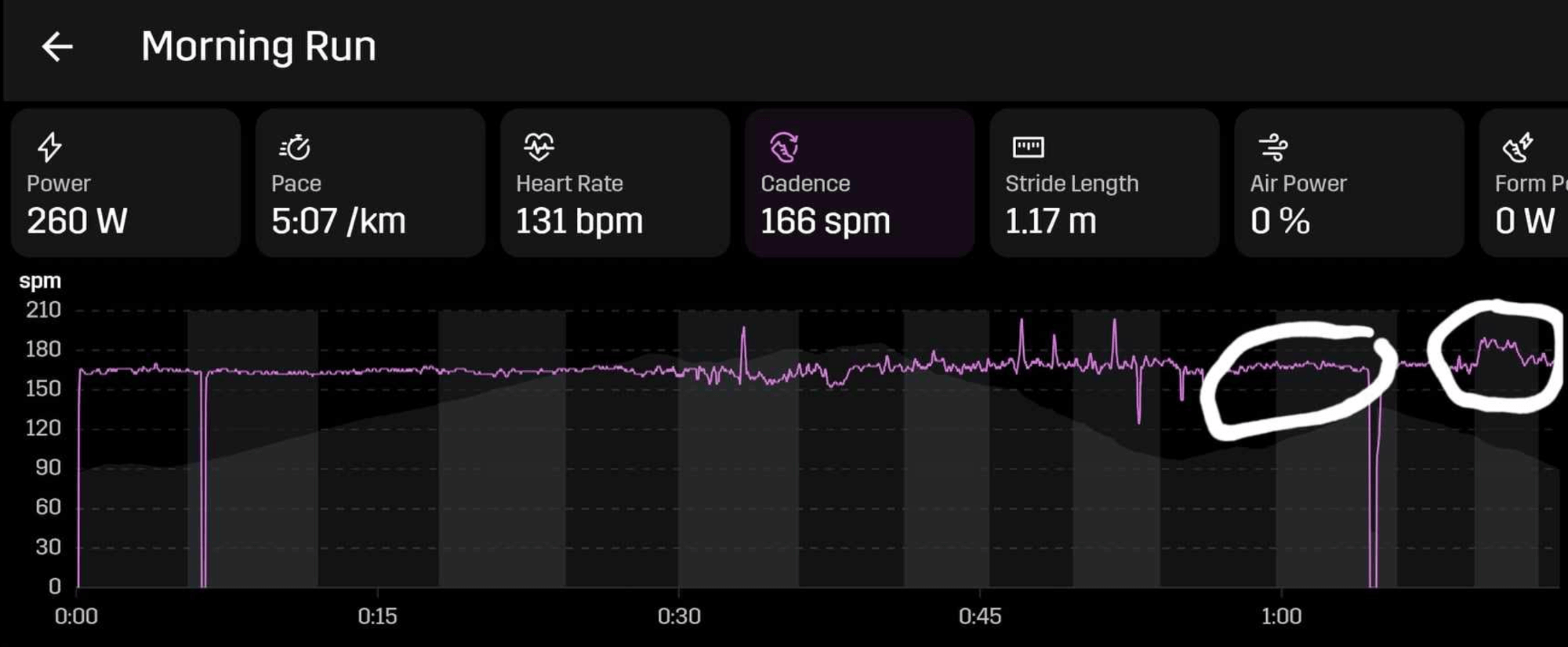
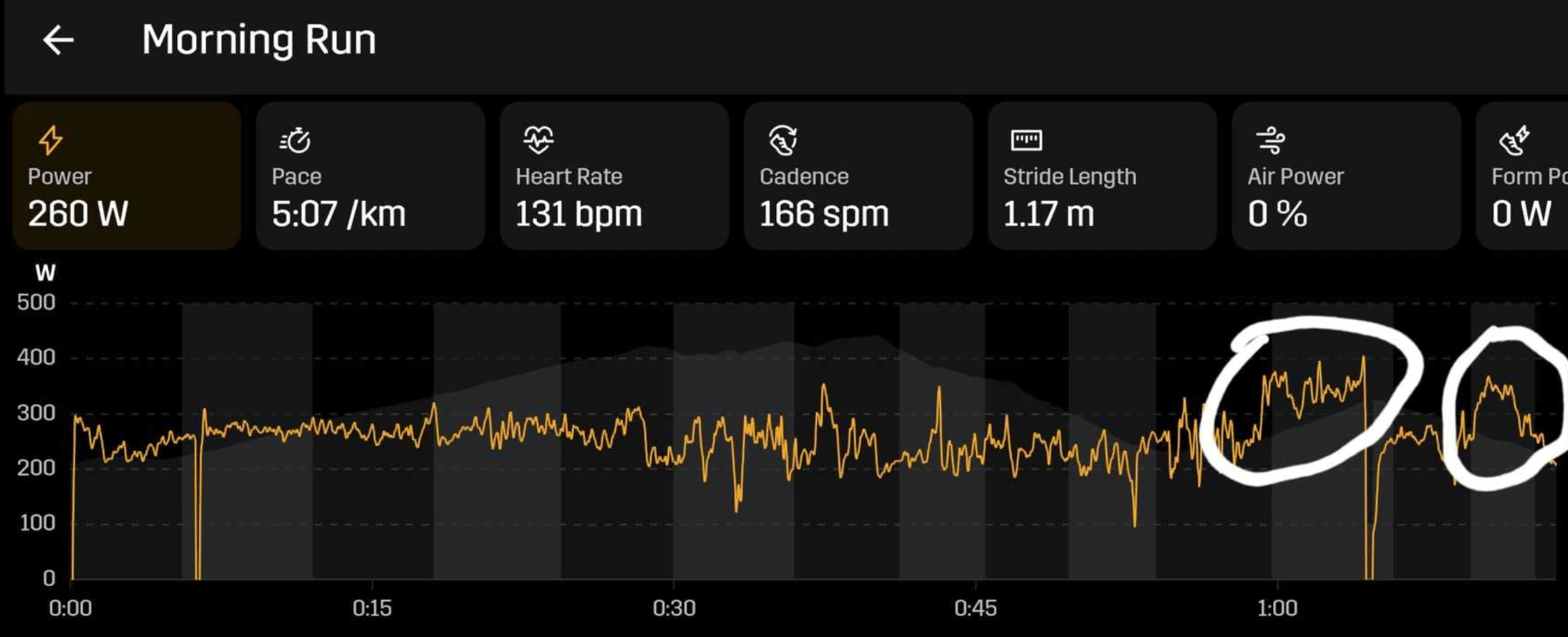
Stryd can also work to streamline your running style
I completed two runs, where I ran an identical route in the same conditions, shoes and in the same state of fatigue. I completed the first run completely intuitively, without any concentration on anything. The result was an average cadence of 165 steps/min at a pace of 5:30 min/km (this was measured only on the route upwards, without running down) and an average heart rate (pulse) of 142 beats/min. A few days later I completed the same thing, but this time I deliberately tried to run at a higher cadence. The result was a cadence of 172 steps/min at a pace of 5:28 min/km and an average heart rate of 143 beats/min. At first glance, an identical run, but when I later examined the power output in watts, I found that at a higher cadence I had an average power output of 10 watts lower, which is no longer a completely negligible power output. I will still have to verify this theory with further experiments, so I would not definitively close it yet. Anyway, I can already say that Stryd can also work in making running style more efficient and it can be one of the decisive factors, especially in ultra runs, where every watt (power) and calorie expended counts and it can be one of the key ways to improve preparation and ensure consistency of performance without energy and performance crises.
These are the three main observations that caught my attention after 2 months of using Stryd. Stryd certainly has a lot more to offer, but the rest will be revealed in further training, tests and the races themselves.
Conclusion
At first glance, Stryd is a device designed primarily for performance runners who are interested in data and want to improve. However, I also see Stryd as a suitable tool for beginners who do not know their body well enough and have difficulty subjectively evaluating effort in variable terrain. It is also suitable for performance runners who want to improve their preparation and obtain invaluable data about their performance.
Matthew Hujsa
impressions from using Stryd
Matúš Hujsa - multiple representative of the Slovak Republic in water slalom, water slalom coach of the Police Sports Center, member of Matej Beňuš's implementation team (2nd place at the 2016 Rio Olympics). In recent years, he has also been involved in running and is a member of the Naša Atletika Bratislava athletics club. Personal records: 10,000 m - 31m:28m:58s, half marathon - 1h:08m:13s, marathon - 2h:22m:45s. Here are his observations from using Stryd.
Matúš Hujsa: Instagram
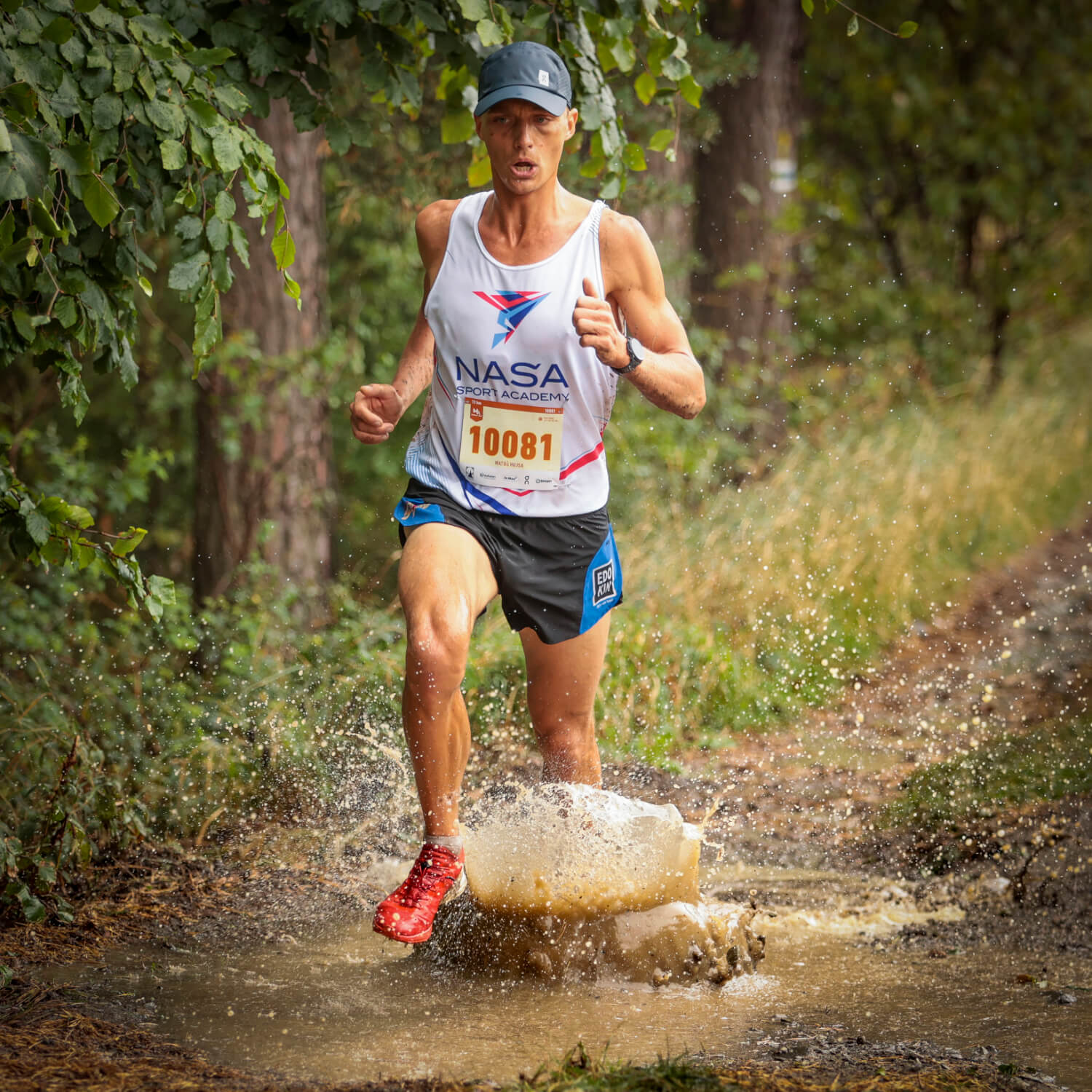
Introduction
I want to share my observations and experiences with using the Stryd power meter. I primarily run on roads and running tracks. When I am in Slovakia, I most often run my training on the embankment, the Danube embankment.
After simply pairing it with the COROS PACE 3 watch and installing the STRYD app, I started using the device right away. The Stryd mobile app is simple and clear. Before using Stryd, I entered my current anthropocentric indicators (height and weight) into my profile. Based on these two data, STRYD calculates Critical Power (hereinafter referred to as CP) after several training sessions. CP is the maximum power value measured in Watts that you should be able to maintain for approximately 40 minutes. Stryd gets to know you and collects data during the first training sessions. In order to create an individual performance profile, it is necessary for the runner to run several free runs, tempo runs and short sections with maximum effort. After a few training sessions, the CP value expressed in relative values (W/kg) will be displayed in the app, which you can start working with in your training sessions.
I like the way Stryd connects to the COROS watch, where you can track your current performance metrics while you run, depending on what you want to track during your run. (Stryd has native integration with the COROS watch.)
13 km tempo run
I had a 13-kilometer tempo run planned at a pace of 3m:30s/km. I wore the Stryd from the start of the jog, during the tempo run, until the end of the entire workout with a jog. It was very windy during the run and my plan was to maintain a pace of 3m:30s/km for the entire 13 kilometers. The graph shows the entire course of the workout. Stryd also records the strength of the effort expended when overcoming the wind (Air power – expressed in %).
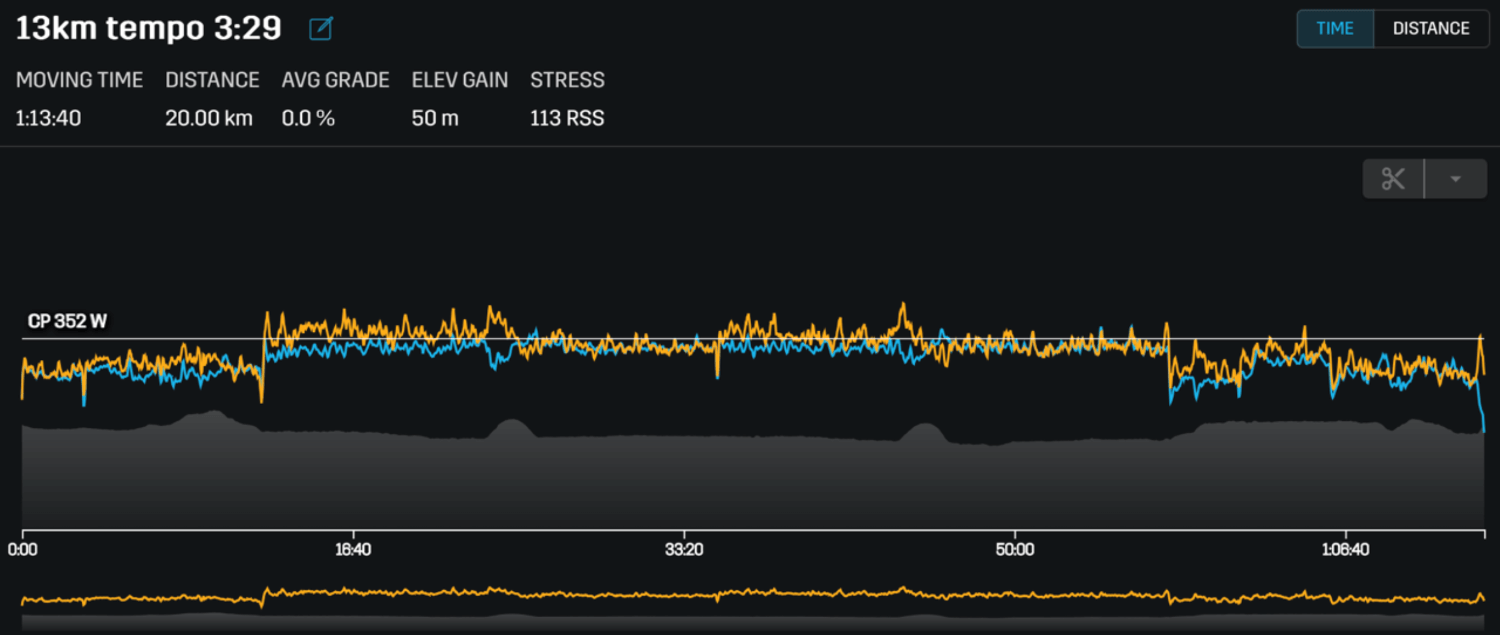
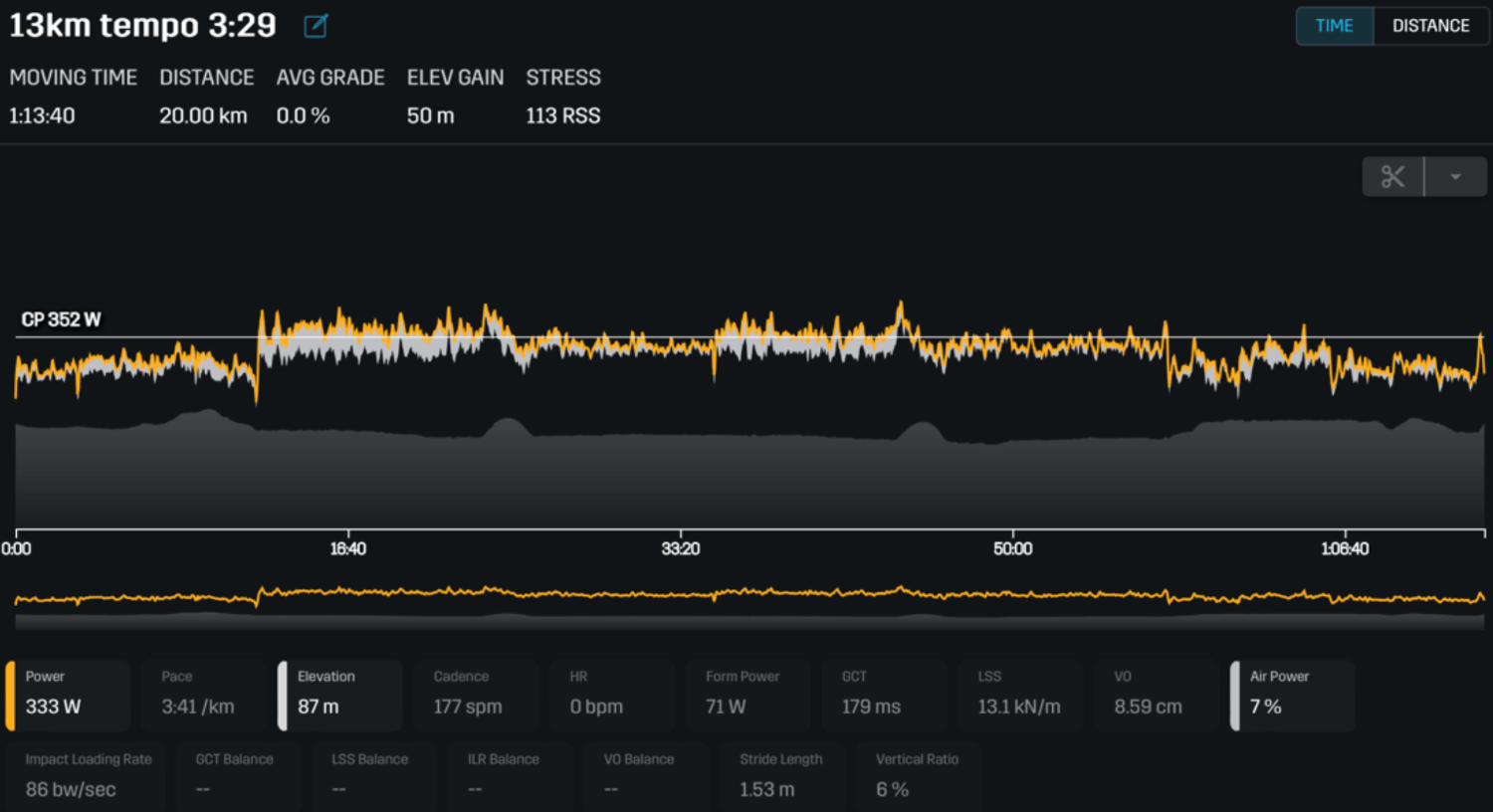
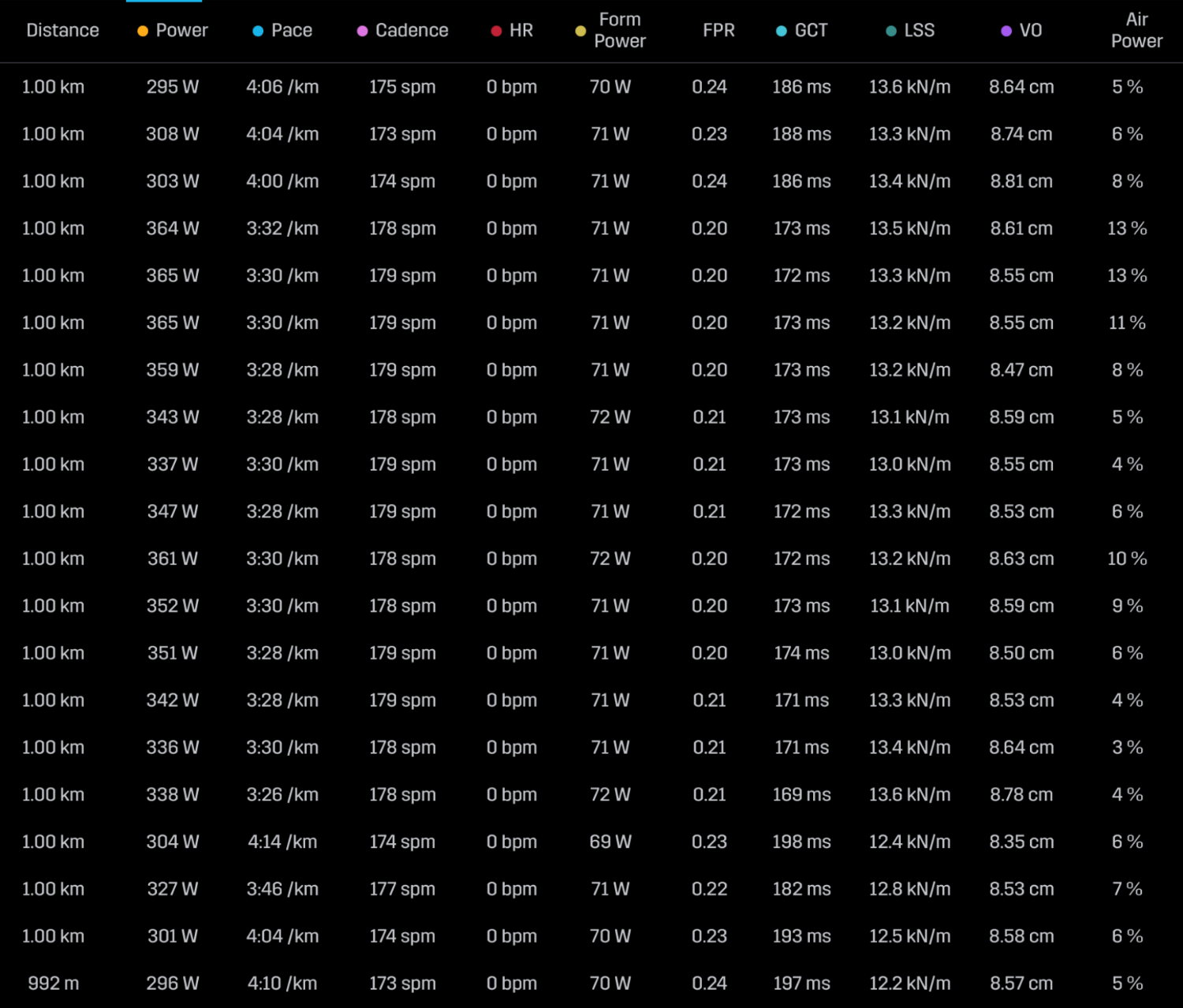
The output from the first training session with Stryd surprised me positively, because the perceived effort to maintain a constant pace of 3m:30s/km in various wind conditions was also evident in the output from the training session itself.
Distance testing on a 350m oval
On December 9, 2023, Stryd was used for interval sections for the first time. I ran the training at the Bratislava FTVŠ UK oval, where the first track measures exactly 350m. On the plan, I had a training of 6 x 1,600 m at a pace of 3m:15s/km with a 150m intermediate trot. From my training runs on this 350m oval, I have tracked that in GPS mode on the COROS watch I have a standard deviation of 1,000m +/- 10 to 15m.
STRYD during sections: During each section, out of curiosity, I checked at each line marking 100 m how STRYD continuously measured the distance of the given section. To my surprise, every time I crossed the line, the watch showed 100 m.
STRYD during the break between sections: After completing the interval, a short 150 m intermediate trot followed. STRYD reacted quickly to the sudden change in pace from 3m:15s/km to an intermediate trot of 5m:30s/km. He again measured the distance during the intermediate trot to exactly 150 m.
28.1.2024 - cross-country race in Vienna - 10 km, time 32m:20s
Since I had been using Stryd for almost a month, during which training data was collected, I wanted to test running a race on a certified flat course with a minimum number of turns at the Critical Power level. I have this value set at 352 Watts. I monitored my lap pace and average 10-second power in the COROS watch. I ran the race at the current CP level. It is true that I did not prepare for the race in any special way, and during the week of the race itself, I had completed 10 hours of cross-country skiing and 10 hours of running (a total of 260 km) and I entered the race with slight fatigue. According to its prediction, Sryd determined that I should be able to run a 10 km race in ideal conditions in the range of 31m:45s - 32m:15s. Which came true.
I also ran a race in STRYD - PACE/DISTANCE mode and wanted to see how accurately Stryd would measure a certified 10 km course without using GPS. I rate the measured 10.04 km positively. In the second lap I circled and zigzagged between the runners I was catching up with. A 40 m deviation is negligible at 10 km.
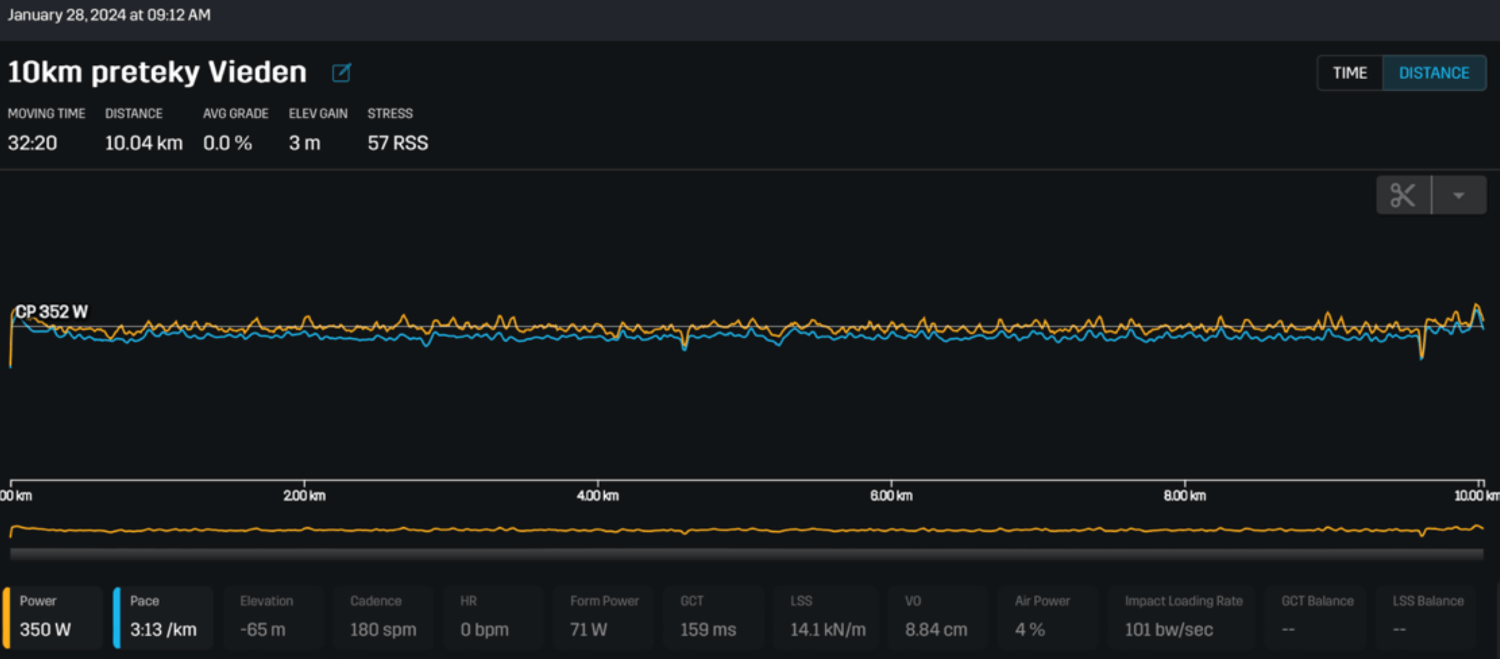
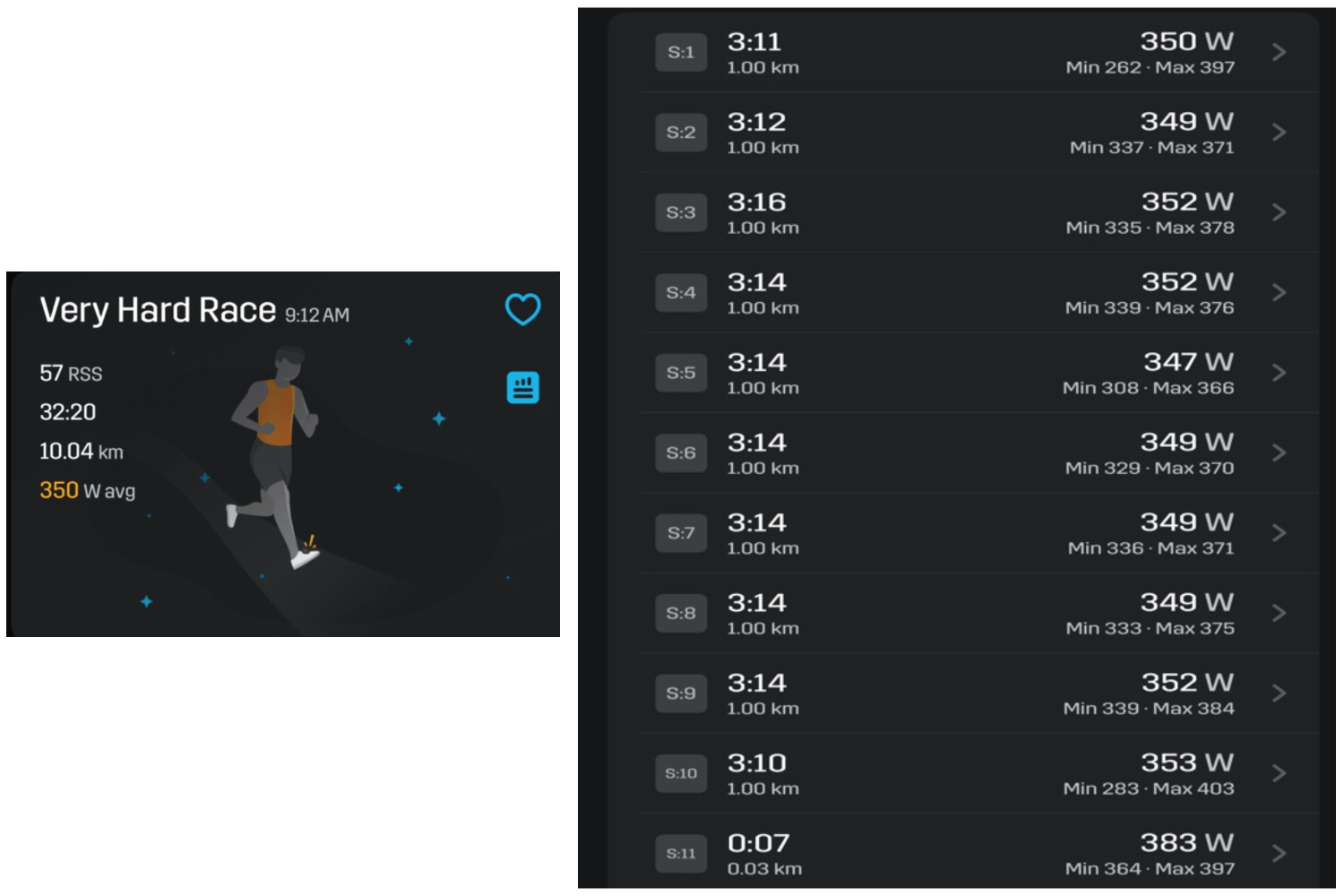
Stryd and treadmill
It is well known that the issue of accuracy in measuring distance, pace and effort on a treadmill is currently a hot topic. Today's workout was my first on a treadmill and I was curious to see what kind of results I would get from comparing Stryd vs treadmill data. I completed a simple graded endurance workout
Treadmill data
Training summary:
- distance: 16 km, time: 01h:09m:27s, average pace: 4m:20s/km, 1% gradient
Split times:
- 5 km time: 23m:07s pace: 4m:37s/km 227 W
- 4 km time: 17m:48s pace: 4m:27s/km 236 W
- 3 km time: 12m:51s pace: 4m:17s/km 244 W
- 2 km time: 8m:04s pace: 4m:00s/km 261 W
- 2 km time: 7m:36s pace: 3m:46s/km 277 W
Data from Stryd
Training summary:
- distance: 14.55 km, time: 01h:09m:40s, average pace: 4m:48s/km, 1% gradient
Split times:
- 4.5 km time: 22m:50s pace: 5m:07s/km 227 W
- 3.6 km time: 17m:45s pace: 4m:56s/km 236 W
- 2.77 km time: 13m:12s pace: 4m:46s/km 244 W
- 1.83 km time: 8m:08s pace: 4m:26s/km 261 W
- 1.87 km time: 7m:48s pace: 4m:11s/km 277 W
Conclusion from today's training
The calibration and accuracy of running data from a treadmill may differ from reality and are not accurate. I have run several training sessions on a treadmill with Stryd in standardized conditions and with only a very negligible deviation. From my observation so far, Stryd is an excellent helper for indoor training (running on a treadmill + indoor training). Because the data that Stryd shows us corresponds to the effort expended + Watts at individual paces on the belt and correlates with Watts when running outdoors. When running indoors, I recommend training according to Stryd in the same way as when running outdoors.
Jakub Siarnik
Impressions from using Stryd
Jakub Šiarnik - a long-time representative of the Slovak Republic in ski mountaineering. His greatest achievements include 10th place at the World Ski Mountaineering Championships, Boi Taul 2023 in the Vertical Race discipline. Multiple winner of the Slovak Cup in ski mountaineering, multiple winner of the iconic ski mountaineering race Bokami Západné Tatry, and holder of the fastest ski alpine time on Chopok (1,000 m elevation gain) in 36m:30s. Here are his impressions of using Stryd.
Jakub Šiarnik: Instagram Website
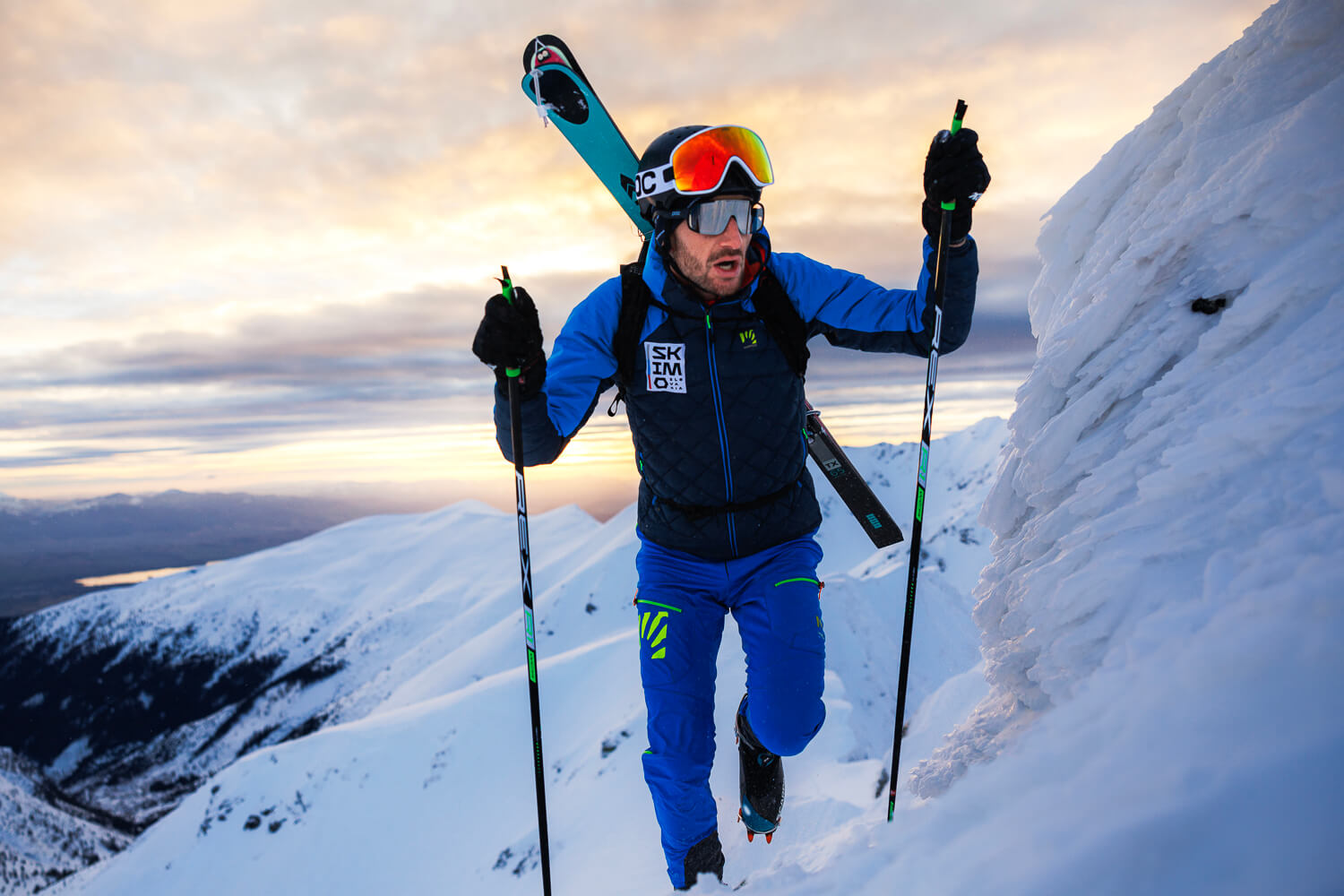
Stryd is another completed item from the wishlist of technological toys in my sports arsenal. I enjoy monitoring objective quantities and relating them to feeling. In addition to the conventional heart rate (heart rate), I use lactate or intramuscular oxygen saturation measurements. What counts in the final is what happens on the way out. The decisive parameter is always performance. This, together with technique and movement economy, determines the final time at the finish line. We are also better able to set the race pace or the intensity of volume or interval training based on performance. I have been using a power meter on my bike (wattmeter) for a few years now. When running, I did not follow the performance because the data from the watch was too indicative. Athletes know how to work with pace (in min/km) - this is the equivalent of performance after taking technique into account. However, it does not work in terrain with elevation. We can indirectly determine intensity through Effort Pace , but again we are not precise enough. This brings us to running power meters.
Jakub organizes ski-alpine courses for the public, the aim of which is to learn how to move more efficiently on skis. For those interested in individual training, it is possible to arrange a 1:1 collaboration, where Jakub will reveal the best of his know-how. Another area in which Kubo is at home is hypoxic training and its connection to fine-tuning the form.
The challenge for manufacturers lies in the method of data collection. On a bicycle, it is a relatively simple resistance sensor that records the deformation of the crank under the pressure of the rider's legs. When running, a significantly more complex algorithm comes into play, in the case of Stryd, taking into account, for example, wind support. That's why I was looking forward to Stryd, which I knew was considered to be generally the best calibrated. I haven't run much with Stryd yet, because I only got it in the winter. But the first impression is great. The watch ( COROS Pace 2 Pro ) natively supports the sensor and the readiness for measurement is indicated by the "S" icon, which lights up after connection, just like when connecting a chest strap or downloading a satellite signal. Fears of losing the device during activity were not confirmed. The snap-on clip works reliably and holds the 8-gram gadget without any problems. The device has an instant response resulting from the high sampling rate and adapted dynamic range. In real-world use, I find it more convenient to display a moving 3-second average value, which is more stable, especially on more technical terrain. I also tried using Stryd when hiking in alpine skiing. It works quite well at eliminating slippage, but it cannot take into account the weight of the equipment. Therefore, it can be used especially on steeper or running terrain to stabilize intensity, but the values do not reflect the real "output" in watts - they should rather be taken as an indexed number.
